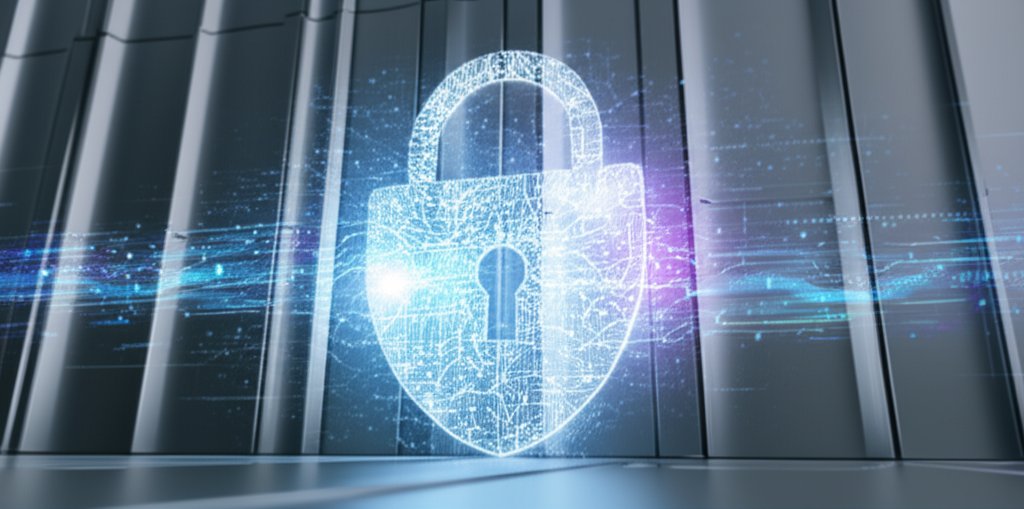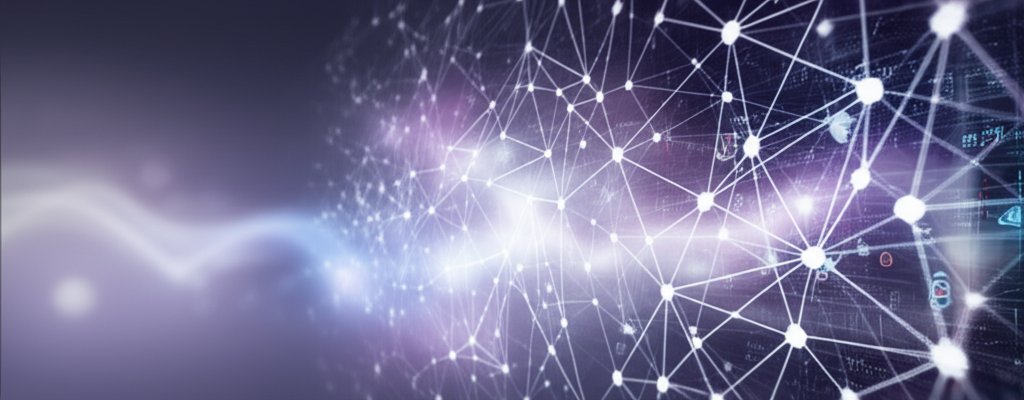The digital world we navigate daily relies on a foundation of trust, secured by invisible locks and robust codes. But what if those locks, once considered impenetrable, suddenly faced a threat capable of picking them with ease? That’s the looming reality presented by quantum computers, and it’s why the next frontier for protecting your data isn’t just an upgrade; it’s a complete revolution: quantum-resistant cryptography.
As a security professional, it’s my job to help you understand these complex shifts without the alarm bells, empowering you with knowledge. We’re not facing an immediate crisis, but a long-term strategic challenge. This isn’t just for governments or huge corporations; it’s about your online privacy, your small business’s future, and the security of every digital interaction you make. Let’s delve into why quantum-resistant cryptography is becoming your essential future data shield.
The Digital Vaults We Rely On Today (And Why They’re Vulnerable)
Right now, your online life is protected by highly sophisticated encryption. Think of it as a series of incredibly strong digital vaults. When you log into your bank, shop online, or send a secure email, these vaults spring into action, safeguarding your sensitive information.
How Modern Encryption Works (Simply Put):
We primarily use two types of encryption. First, there’s public-key (asymmetric) encryption. Imagine you want to send a secret message. You lock it with a special padlock, but instead of needing a shared key, I give you an open padlock (my public key). Anyone can use it to lock a message for me. Only I have the unique key to unlock it (my private key). Algorithms like RSA and ECC (Elliptic Curve Cryptography) power this, used for things like securing your website connections (HTTPS) and digital signatures. Crucially, it is these asymmetric schemes—RSA and ECC—that are most directly targeted by the advent of powerful quantum computers.
Then, there’s symmetric encryption. This is like a single secret code that both you and I use to encrypt and decrypt messages. It’s super fast and efficient for large amounts of data, like when you’re streaming a movie or transferring a big file. AES (Advanced Encryption Standard) is the most common example here.
Together, these systems form the backbone of our digital security, and for classical computers, they’re practically uncrackable. But that’s where the game-changer comes in.
Enter Quantum Computers: A Game-Changer:
For decades, we’ve relied on the idea that certain mathematical problems are just too hard for even the fastest traditional computers to solve in a reasonable timeframe. Our encryption methods are built on this premise. But quantum computers are different beasts altogether.
Unlike classical computers that use bits (0 or 1), quantum computers use qubits. These aren’t just 0s or 1s; they can be 0, 1, or both simultaneously (a state called superposition). They can also be mysteriously linked together, no matter the distance (entanglement). This allows them to process vast amounts of information in ways classical computers can’t even dream of. We’re talking about solving problems exponentially faster by exploring multiple possibilities at once, not one after another. It’s truly fascinating!
The biggest threat comes from algorithms like Shor’s algorithm. This isn’t just a faster way to crack a code; it’s a fundamental shortcut that can effectively break the mathematical problems underlying RSA and ECC encryption—the very public-key schemes we just discussed. It’s like finding a master key that works on nearly every digital padlock we use today. And while Grover’s algorithm isn’t quite a master key for symmetric encryption like AES, it significantly reduces the effective strength, making a 128-bit key as secure as a 64-bit key, which is still a major concern.
This isn’t just science fiction anymore; it’s a rapidly advancing field. Major players like IBM, Google, and IonQ are making real progress. So, while your current locks are strong today, we need to think about tomorrow.
The “Harvest Now, Decrypt Later” Threat: Why Act Early?
You might be thinking, “Well, quantum computers aren’t here yet, so why worry?” That’s where the insidious “Harvest Now, Decrypt Later” (HNDL) threat comes in. Attackers know that today’s encrypted data is extremely valuable. Even if they can’t break it now, they can collect and store vast amounts of it – financial records, healthcare information, government secrets, intellectual property, personal communications – with the intent of decrypting it once sufficiently powerful quantum computers exist. This could be years or even decades from now, but the data harvested today would suddenly become exposed.
This makes the quantum risk uniquely “retroactive.” Imagine if your highly sensitive data, encrypted and seemingly secure today, could be accessed by criminals in five, ten, or fifteen years. The shelf life of data is long, and the sensitive nature of much of it means we can’t afford to wait until the threat is knocking at our door. We need to start building new, quantum-safe vaults now.
What is Quantum-Resistant Cryptography (PQC)?
Quantum-resistant cryptography, often called Post-Quantum Cryptography (PQC), is precisely what it sounds like: a new generation of cryptographic algorithms specifically designed to withstand attacks from both classical (traditional) and future quantum computers. The goal is simple yet monumental: to replace our current, vulnerable public-key algorithms with “quantum-safe” alternatives.
These new algorithms don’t rely on the same mathematical problems that Shor’s algorithm can easily break. Instead, they leverage different, extremely hard mathematical challenges that even quantum computers struggle with. It’s like designing a whole new kind of lock that requires a different, far more complex set of tools to pick – tools that quantum computers don’t possess.
The Pioneers of the New Frontier: Types of Quantum-Resistant Algorithms
Building these new cryptographic foundations is a monumental task, requiring global collaboration from cryptographers, mathematicians, and security experts.
NIST’s Role in Standardizing PQC:
The U.S. National Institute of Standards and Technology (NIST) has been at the forefront of this effort, running a multi-year, international competition to identify and standardize the best quantum-resistant algorithms. It’s been a rigorous process of evaluation, testing, and peer review.
Recently, NIST announced its initial set of finalized standards, marking a huge step forward. For example, ML-KEM (formerly Kyber) has been selected for key encapsulation mechanisms (essentially, securely agreeing on a secret key over an insecure channel), and ML-DSA (formerly Dilithium) for digital signatures (verifying the authenticity of a message or document).
A Glimpse into the New Algorithms (Simplified):
So, what kind of mathematical magic do these new algorithms use? They’re quite diverse:
- Lattice-based cryptography: This is a leading family of PQC algorithms, including CRYSTALS-Kyber. Imagine a multi-dimensional grid of points (a lattice) so incredibly complex that finding the “shortest” or “closest” point within it, given some starting information, is incredibly difficult for any computer, classical or quantum. It’s a bit like finding a specific grain of sand on an infinite beach.
- Hash-based cryptography: These are often simpler and rely on the security of cryptographic hash functions (one-way mathematical functions). Think of them like digital fingerprints. While not as versatile as lattice-based options for all PQC needs, they offer robust digital signatures, especially for single-use keys (e.g., Merkle signatures).
- Other types include Code-based and Multivariate cryptography, each presenting different kinds of computational puzzles that are believed to be hard for quantum computers. The diversity means we’re not putting all our eggs in one mathematical basket.
What This Means for Everyday Internet Users and Small Businesses
This all sounds very technical, so what does it mean for you, an everyday internet user, or a small business owner? It’s not about immediate panic, but proactive awareness and preparation.
Don’t Panic, But Be Aware:
Let’s be clear: the encryption protecting your data today is still incredibly strong against classical attacks. You don’t need to stop using online banking or fear every email. However, the transition to quantum-resistant cryptography is a long-term project. We often call it “Q-Day” or “Y2Q” (Year 2 Quantum) – the moment quantum computers become powerful enough to break current encryption. This isn’t a single day but a gradual shift, and smart planning starts now.
The good news is, you’re not alone. Experts around the world are already hard at work on this. It’s about collective vigilance.
What to Look For (Future-Proofing Your Digital Life):
For most internet users, the shift will be largely invisible. Your software and devices will handle the heavy lifting. The key is to embrace fundamental cybersecurity best practices that will also prepare you for the quantum age:
- Keep software updated: This is always critical! Software updates for your operating system, web browser, and applications will gradually incorporate quantum-resistant algorithms as they become standardized and deployed. Staying updated ensures you receive these vital security upgrades.
- For small businesses: This is where you have more agency. You should start asking your IT providers and technology vendors about their quantum-readiness plans. Ask about quantum-safe roadmaps for services like cloud storage, VPNs, secure communications, and website certificates. Look for vendors who are talking about “crypto-agility” – the ability to easily update and swap out cryptographic algorithms without overhauling entire systems. This flexibility will be crucial during the transition.
The Role of Hybrid Systems:
During this transition, you’ll likely hear about “hybrid systems.” This means combining both classical (current) and quantum-resistant algorithms simultaneously. It’s like having two locks on your vault: one that’s strong against classical attacks, and another that’s strong against quantum attacks. If one fails, the other still holds. It’s a smart, transitional safety net ensuring maximum protection as we move into the quantum era.
The Road Ahead: A Secure Quantum Future
The journey to a quantum-safe world is an active and evolving field. Researchers are continually refining algorithms, and engineers are working on integrating them into our digital infrastructure. As a security professional, I can tell you that continuous vigilance, embracing updates, and asking the right questions will be key to maintaining robust data security. The future of our digital communication depends on it.
While the quantum threat is real, the solutions are also being built, right now. By understanding these shifts and staying informed, we can collectively ensure our digital future remains secure and private. Let’s make sure our digital vaults are impenetrable, no matter what advanced threats emerge on the horizon. Don’t forget that protecting your business data now means understanding these quantum-resistant algorithms.









